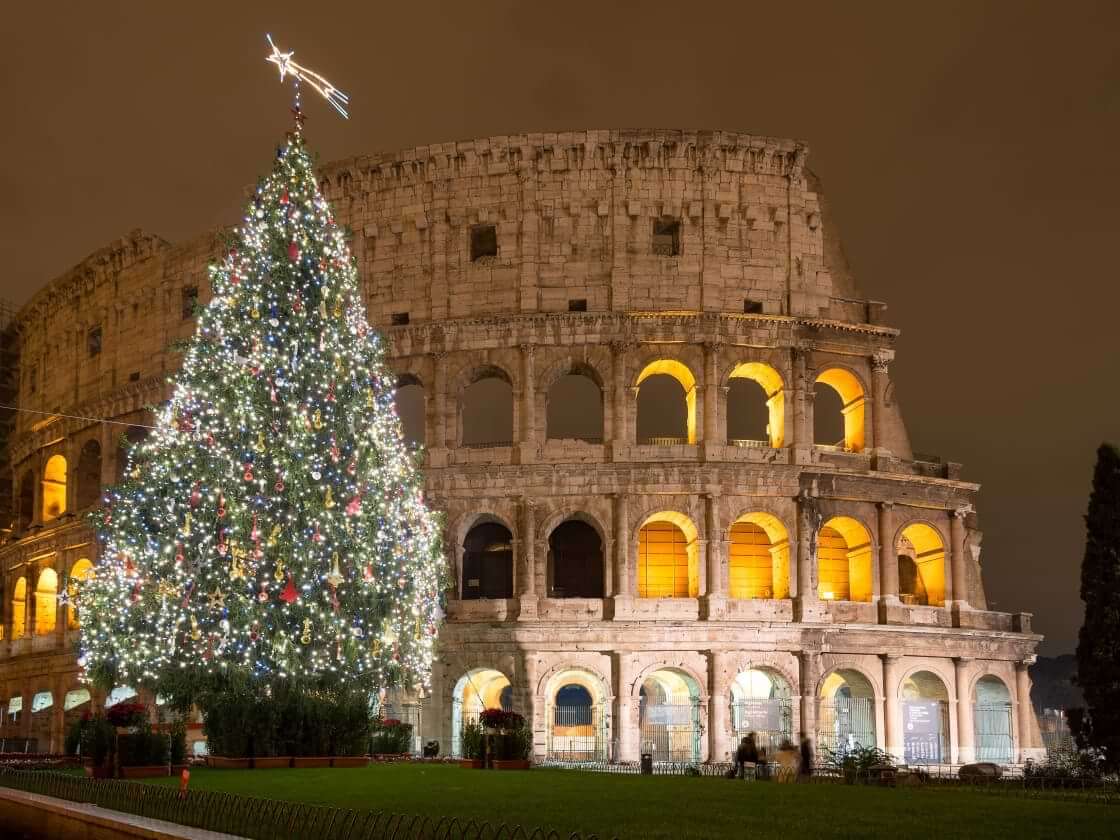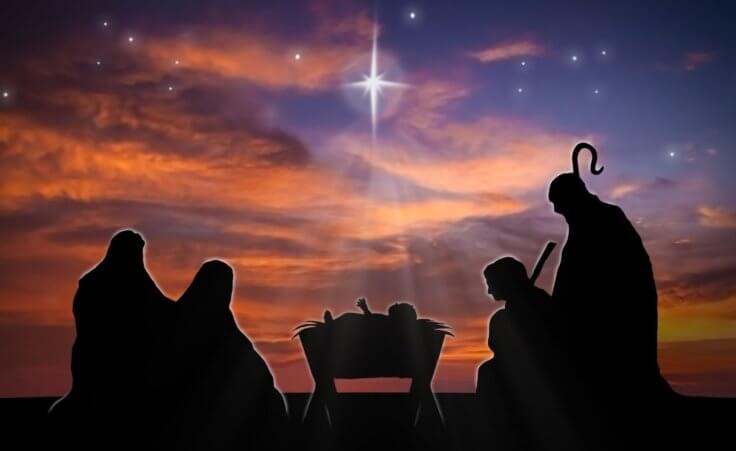
A well-lit Christmas tree stands outside of the Coliseum in Rome, Italy, at night. © By Matteo Gabrieli/stock.adobe.com
Chances are, most of us have a tree—either real or fake—featured prominently in our homes this Christmas season. But have you ever wondered where that tradition came from?
After all, it’s kind of strange if you stop and think about it.
Turns out, people started putting up Christmas trees (or some derivation thereof) centuries before the very first Christmas, and understanding how that ancient practice came to be a featured part of our holiday experience has an important lesson to teach us about how we see and share our traditions today.
The origins of the Christmas tree
The first Christmas trees date all the way back to the ancient Egyptians, who believed that winter came because the sun god, Ra, got sick and weak during the cold months of the year.
The winter solstice—which always falls around December 25—marked the moment the days began to grow longer, which they took to coincide with their god starting to get healthy again. To celebrate, they would fill their homes with green palm rushes to symbolize the triumph of life over death.
The Romans had a similar tradition around the feast of Saturnalia. Saturn was the god of agriculture, so the winter solstice meant that the worst of the cold months had passed and their farms and orchards would soon start to flourish again. As part of the feast, they decorated their homes and temples with the boughs of evergreen trees.
However, the druids in Northern Europe are perhaps the most important for explaining the origins of our traditions today.
The druids were the priests of the ancient Celts and, like the Romans and Egyptians, they also decorated their temples with evergreen boughs as a symbol of everlasting life. When the Vikings invaded, they adopted the tradition and came to associate the evergreen tree with their sun god, Balder.
This association kept the evergreen tree as an important symbol of life throughout much of Europe during the middle ages, which brings us to Martin Luther, Germany, and the origins of our Christmas trees today.
From “heathen traditions” to a symbol of hope
Germany gets credit for starting the Christmas tree tradition in the 1500s when they began bringing the full trees, rather than just the branches, into their homes and decorating them. The practice hailed from a popular medieval play about Adam and Eve that used a “paradise tree” hung with apples. The play was performed every Christmas Eve—Adam and Eve’s feast day according to the Catholic calendar. Interestingly, this play is also where we get the idea that the fruit Adam and Eve ate in the garden was an apple.
Traditionally, Martin Luther is credited with being the first to add candles to the trees, which eventually morphed into the Christmas lights we use now. It’s said that, while preparing a sermon on his way home one night, he saw the stars shining through the forest of evergreens and wanted to replicate the scene at home. The candles eventually took on the added dimension of symbolizing Jesus as the Light of the World.
Later, German settlers brought the tradition to America, but it took a while for it to catch on. The Puritans, aware of the ancient origins of the Christmas tree, had rejected them as “pagan symbols” and “heathen traditions” that had no rightful place in the celebration of Christ’s birth. Eventually, though, the influx of German and Irish immigrants in the 1800s was large enough to outweigh the residual hesitations from Puritan times.
The turning point in the trees’ popularity, however, didn’t come until Queen Victoria and her German Prince, Albert, were sketched with their children around their family Christmas tree. Because people in Britain and along the eastern coast of America were big fans of the English monarch, they quickly adopted the practice as well, with the biggest difference being that American Christmas trees tended to be about twice as large as their British counterparts.
The most famous Christmas tree today is arguably found each year in Rockefeller Center. The first one was placed there in 1931 by construction crews at the site. The Great Depression was still going on, and the building had employed so many people who needed a job that the tree came to serve as a symbol of hope for the workers.
A Christmas call to prayer
While the traditions around Christmas trees have evolved quite a bit since the time of the ancient Egyptians, it’s interesting that themes like hope and the triumph of life over death remain prominent in our celebrations of the holiday. And the pagan origins of the Christmas tree remind us that those themes are important to all people rather than just Christians.
So what can we do to help people recognize Jesus as the ultimate fulfillment of that search for life and hope today? Who do you know that might be in need of those blessings?
As Christmas draws near, let your Christmas tree serve as a daily reminder to pray for the people who came to mind as you reflected on those questions. Every time you pass by it, take a moment to ask God to help you be a source of hope and a messenger of life in their lives.
And when the holiday ends and the trees go back up for another year, ask the Lord to help you remember those faces and to use you to help them come to know the Lord in the new year.
Christmas trees may have a pagan origin, but God can still use them to be a symbol of hope and life for the lost today.
Will yours serve that purpose this Christmas season?














